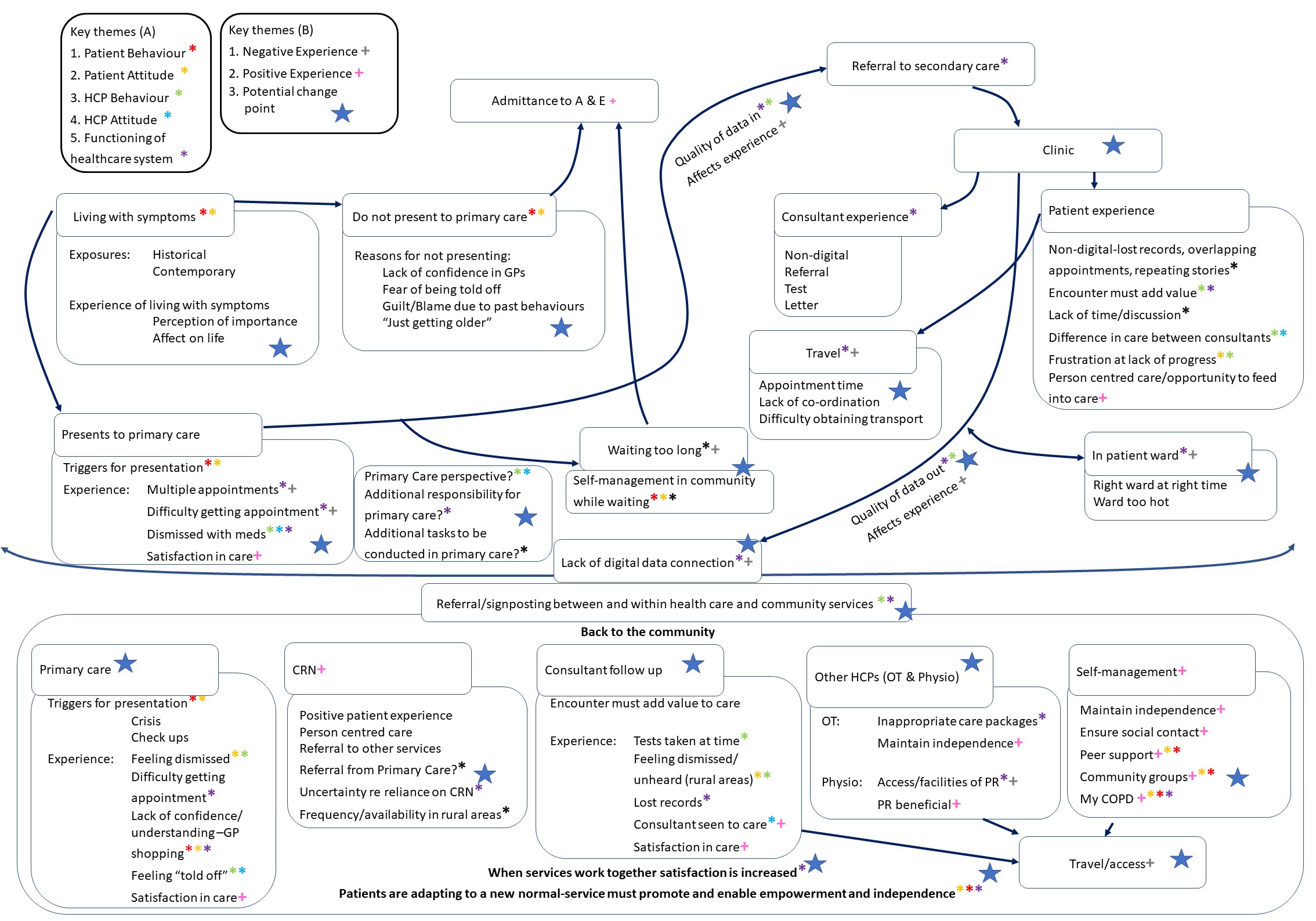NHS Highland: Transforming Respiratory Services through Pathway Mapping
The Highlander Pathfinder aimed to co-design a transformation of services available to people who experience respiratory symptoms with a focus on facilitating prevention, early intervention and self- management, including through the use of digital technologies.
What was the issue/presenting problem/objective?
The Discover stage of the Pathfinder involved mapping the pathway which a person requiring respiratory healthcare services in NHS Highland takes. Mapping someone’s journey through a healthcare system is an essential step to ensuring that people are able to access services through appropriate channels at the time of need, and to ensure that any blockages and bottlenecks in the system can be identified and addressed.
What we did and how we did it
We created an initial template, which predicted that people took a relatively simple and linear journey through the system. In order to determine whether this was accurate we undertook a review of literature available from secondary sources, and gathered stories from healthcare workers and people with lived experience of accessing respiratory services to hear about people come to navigate their way through the system in practice.
From these discussions, our pathway map changed from the initial, simple model to a diagram far more complex than we had originally envisaged.

How mapping the pathway helped
While appearing complex, the development of this pathway map improved our clarity and focus throughout the subsequent stages of the Pathfinder. It allowed us to sharpen our understanding of what elements of the system require improvement during the Define phase, and to hone focus on particular priority areas for discussion with key stakeholders during our Develop phase. This allowed for targeted recommendations for improvement to be made for specific aspects of the patient journey.
Key learning points
This pathway mapping exercise gave us the following insights:
- The importance of engaging with providers and with people with lived experience of accessing services in building up an accurate picture of how people navigate through a healthcare system.
- The value of producing a richly detailed pathway map for identifying areas for targeted improvement in individuals’ access to and journey through the healthcare system.
